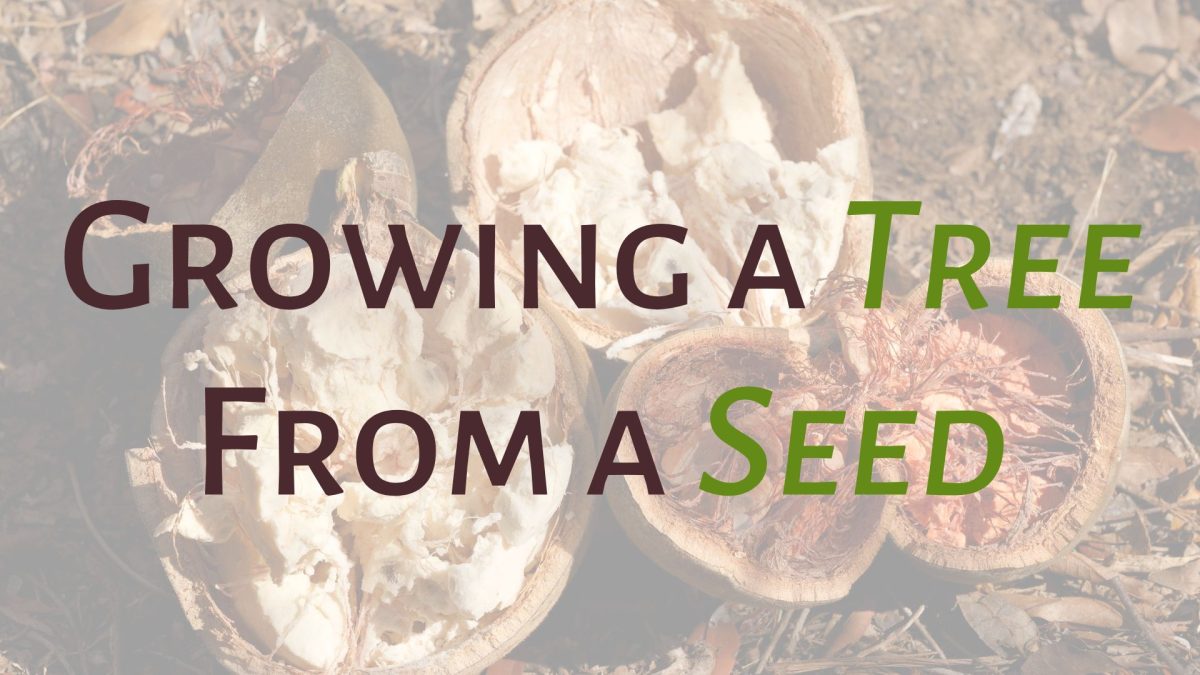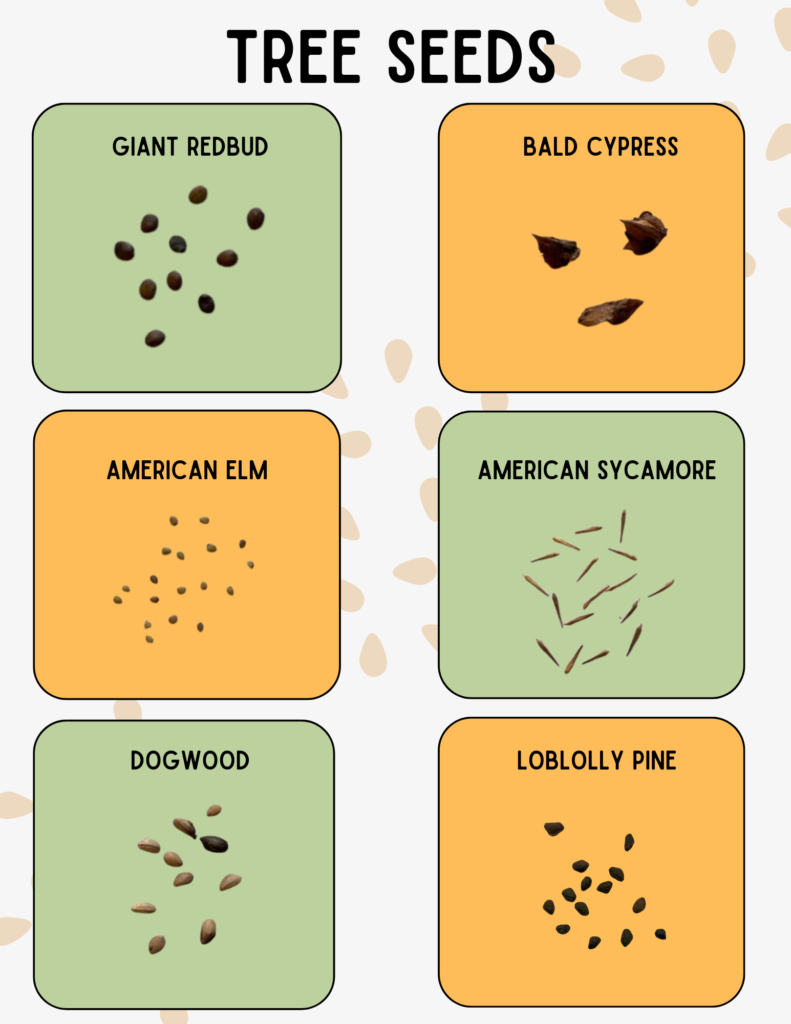Growing a Tree from a Seed
Spring 2022 Leaflet
7.14.22
The “Lost” Treasure Trees
9.05.22

How to Grow a Tree from a Seed
Growing trees from seeds takes time, but also can be a very rewarding experience. There are typically type two ways to start the growing process of a tree seed. You can plant your seed by sowing it in the fall outdoors (also known as the “natural way”) or you can assist in the seed’s germination through scarification or stratification, which typically happens indoors.
Growing Seeds Naturally
If you are looking to grow your tree seed the “natural way” you’ll want to look to plant your tree seed in the fall season, when most trees are self-germinating. When you plant your seed in the fall without any type of pre-treatment, it will typically germinate that following spring. It is always recommended to sow your seed at the recommended depth. If planted too deep, the seed may not be able to sprout properly. You can either grow your seed in a small container outdoors to start or you can plant directly into the ground.
Assisted Germination
Using a variety of technics to mimic the natural environment, another option to start the growing process through assisted germination. You should always identify which germination process corresponds to the seed you are looking to germinate. Most seeds require at least one of the following treatments to start the germination process: (1) Scarification (2) Cold Stratification (3) Warm Stratification.
Scarification
Scarification is the process of breaking the seed’s coat in order to allow moisture into the seed, which begins the growing process. Once scarification takes place, you will look to plant your seed as normal.
Scarification Options:
- Water Soak: Allow seeds to soak between typically 6-24 hours.
- Physical Scarification: Use a small file or a small amount of sandpaper and rub the outside of the seed to begin breaking down the seed coat.
Cold Stratification
Stratification is the procedure of imitating the natural environment for a seed to grow. With cold stratification, you are imitating a winter environment.
Process:
- Take a small amount of peat moss and soak in water.
- Take the peat moss out and ring out as much water as you can.
- Place a layer of the peat moss into the bottom of a zip-lock bag or in a plastic planting cylinder (with a lid).
- Place seeds on this layer of peat moss and then fill the rest of the bag or cylinder with more peat moss.
- Seal the container and place it in your refrigerator for the stratification time that your seed requires.
Check in on your seeds occasionally to look for any signs of early germination. If the seeds begin to germinate, you’ll want to take your container out of the fridge and plant your new seedlings as normal. If your seeds to not begin to grow in the fridge, you’ll remove them at the end of the stratification time and plant them as normal.
Warm Stratification
Warm stratification is similar to cold stratification, just instead you are mimicking the summer environment for your seeds. For warm stratification, you’ll follow the same steps above for cold stratification, except that you’ll place your seed bag or container in a warm location (usually between 72-86℉). Same as with cold stratification, if your seed begins to grow in it’s container, you’ll want to take it out and plant as normal.
Planting
You can plant your tree seeds in any type of planting container (such as an individual pot or a seed tray) however you’ll want to make sure that your container has a drain hole at the bottom to prevent overwatering. It is also important that you plant your seeds at the recommended depth for that seed (you’ll find that most tree seeds are planted pretty shallow in comparison to other seeds). Always be sure to use a well-draining potting soil or use a combination that includes peat moss.
After planting your seeds, you’ll want to lightly water them on a regular basis to keep them moist, but not soaking. You may also find it beneficial to create a small “greenhouse” for your new seedling by placing a plastic tent or a capped plastic bottle cut in half over your seed to create a humid and moist environment. Depending on the time of the year and the outdoor environment, you may also find that keeping your new seedling indoors for a few months will give them some more protection while they are still young and fragile. Tree seedlings should be placed in a well light, sunny spot.
Once your seedling begins growing too big for the space that it’s in, you can transfer your seedling to a larger container to continue container growing, or you can transfer your seedling to the ground. When planting your tree seedling in the ground, you’ll want to use the right type of inground soil for your environment and provide some mulch around the base of the seedling.
Send us your results!
Have you grown a tree from a seed? If so, please send photos to info@treescharlotte.org and tell us about your seedling journey!
